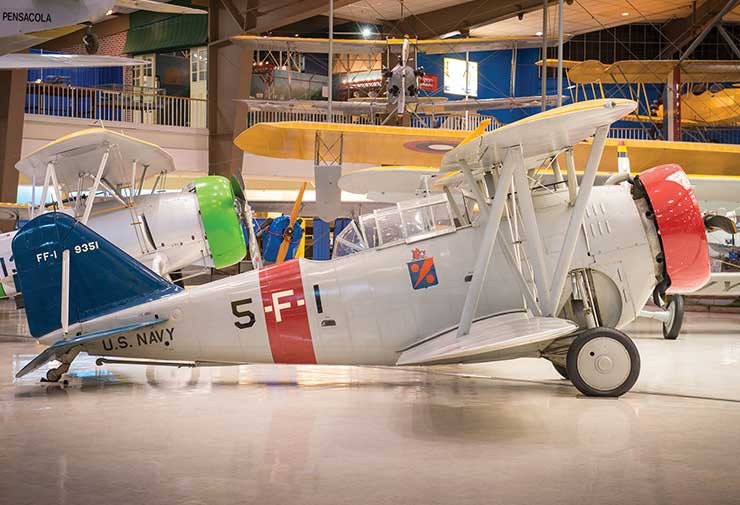FF-1

Low (PNG, 319x319px, 178KB)
Med (JPEG, 1280x1280px, 99KB)
Affectionately known as "Fifi" by its pilots, the Grumman FF-1 was the first in a series of outstanding aircraft that made the name Grumman a virtual synonym for Naval Aviation. Previously a producer of amphibious floats for the Navy, Grumman used its own funds to enter the competition for a new Navy fighter. The result was the highly successful, rather revolutionary, dual-role design, setting a standard of Grumman excellence for the next 40 years.
It was just two months after the stock market crash in October 1929 that six men led by Leroy Randle Grumman, a former naval aviator, formed the Grumman Aircraft Engineering Corporation, their first work for the Navy being the construction of pontoon floats for seaplanes. The floats, which featured retractable landing gear, attracted the interest of the sea service for the potential application of configuration to a fighter aircraft to improve its performance. Grumman submitted a design proposal and April 2, 1931, the Navy awarded the company a contract to build a prototype of what would become the FF-1, the first in a long line of Grumman fighter aircraft to serve the Navy.
First flown in late 1931, the XFF-1 featured a 616 horsepower Wright R-1820E engine, achieving a speed of 195 mph during trials. Later engineers installed the R-1820F engine, which boasted 750 horsepower and increased top speed to 210 mph, by far the fastest of any fighter then in service. A second prototype was modified as a two-seat scout and designated XSF-1.
The FF-1 proved revolutionary not only in its retractable landing gear, but also with its all metal, stressed skin fuselage and enclosed cockpit, all giant steps forward in aircraft design. Though its forward fuselage was bulbous in order to house the retracted landing gear, the FF-1's speed belied its less than streamlined appearance. This became readily apparent to a U.S. Army squadron commander, who upon seeing one flying during an exercise over Hawaii, decided to jump the strange bird with no wheels. "Great was his amazement," reported the Bureau of Aeronautics Newsletter on March 1, 1933, "when his dive upon the innocent looking target failed to close the range." In fact, the only significant drawback to the aircraft was its poor climb capability, taking over six minutes to reach an altitude of 10,000 ft.
Quickly called "Fifi," by pilots, a nickname derived from the aircraft's designation "FF-1," the new fighter entered fleet service in May 1933, eventually equipping the Fighting Squadron (VF) 5B "Red Rippers." Grumman also manufactured a scouting version of the "Fifi," The SF-1 served as command aircraft in fighter squadrons and also equipped VS-3B. All told, sixty-four aircraft (both fighter and scout versions) rolled off the Grumman assembly line. Though their service as front-line aircraft in the Navy would last but two years, FF-2s (FF-1s modified with dual controls) received a new lease on life in the training command. In addition, in 1936 Canadian Car & Foundry acquired the rights to construct a version of the aircraft designated the G-23, examples of which were operated by Canada, Japan, Mexico, Spain and Nicaragua. In Spanish livery the aircraft served the Republican side in the Spanish Civil War, with one claiming a kill of a Legión Cóndor Heinkel aircraft, the only combat victory ever scored by a Grumman biplane.
SPECIFICATIONS
| Manufacturer: | Grumman Aircraft and Engineering Corporation |
| Type: | Carrier-based fighter |
| Crew: | Pilot and observer/gunner |
| Powerplant: | One 700 hp Wright R-1820-78 |
| Dimensions: | Length: 24 ft., 6 in. |
| Performance: | Max Speed: 207 mph at 4,000 ft. |
| Armament: | One fixed forward firing and two flexible rear machine guns |
- Aviation
- Photograph
- Image (gif, jpg, tiff)


